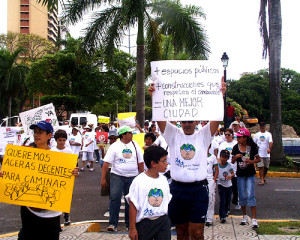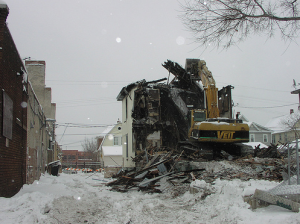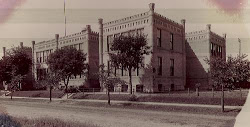
Education
Restoration
Preservation
Welcome to the
Healy Project
Join us on Facebook
Send us an Email
Revoltin’ Developments VI: What You Can Do
 |
| Despite losses and setbacks, Panamanian preservationists repeatedly took to the streets to protest demolitions for redevelopment. |
The question I’m asked most about my comments on this blog is, “What can I do?” When one sees the power of the government (City officials and planners) and the wealth of the financial institutions lined up to promote and support developers, it’s easy to get spun around. Most of us, myself included, do not like to spend our valuable evenings attending hearings and meetings, especially when it seems few on the board or commission care about anyone else’s opinion.
However, our doing nothing means that the City and the developers will proceed with their plans to redevelop inner-city neighborhoods into high-density residential, historical buildings and community opposition be damned. The City has made this agenda clear in the Wedge, where R6 (high density) zoning remains in place, even though over the decades LHENA has made repeated attempts to downzone the affected areas to R2B.
A common misconception is that preservation is a top-down process. Those who expect organizations such as the National Trust for Historic Preservation to swoop in and save the day will be sorely disappointed. The people who care about a building or a community are the ones who must defend it. The National Trust and other preservation organizations provide communities with resources to help them articulate their positions and fight their local battles; they don’t fight the battles for them.
But there’s a lot individuals can do for preservation, based on their interests and priorities. Here are some general things you can do in the current struggle between Big and Small:
1) Acknowledge that this will be a long-term process. Historic preservation action is political. The machinery of government from planning departments to heritage preservation commissions is oiled for development. The City has a whole stable of paid professionals standing by with their studies, plans, and regulations. In addition, the moneyed interests that are driving high density residential redevelopment will not give up without a fight. If they’re stymied with a project in one neighborhood, they’ll seek another place for it.
2) Keep informed and get constant updates through the Healy Facebook page, this blog and other preservation blogs (such as that of the Preservation Alliance of Minnesota) and by reading local newspapers.
3) Spread the word to friends, colleagues, and neighbors about what’s going on.
4) Speak out by attending meetings and/or communicating with city officials by e-mail, letters, or phone calls.
5) Network. Make alliances with like-minded people and groups regarding preservation issues important to you. Recruit people with special skills (organizers, attorneys, architects, business leaders) to join the alliance.
6) Concentrate on the task at hand: slowing the high-density juggernaut. Set aside political differences with allies on unrelated issues.
7) Accentuate the positive. Ignore the voices that keep saying we can’t win.
8) Enjoy what we have now. Celebrate community in our Minneapolis neighborhoods.
More specifically:
9) Serve on committees dealing with zoning and planning, or, if this is not your thing, go to important hearings that affect your neighborhood. On January 30th, the LHENA Z&P Committee has scheduled the first of a number of meetings revisiting R6 zoning in the Wedge. This is a good opportunity to speak out on the issue.
10) Volunteer as an on-the-ground soldier. The best way to combat the half-truths and false allegations by City officials and developers is to have command of the facts. For example, the North Wedge Historic District group (on Facebook) needs people to research its architectural and social history, photograph the buildings, and collect stories from residents.
11) Work to elect officials that support their communities, not moneyed interests. Mayor R.T. Rybak, a booster of high density residential development, is not running for office again. This is an excellent opportunity to elect someone who will listen to neighborhood concerns. Also, we need City Council members who support the people who live in their wards. Go to candidates’ forums and ask what they think about these issues. Of course, they can misrepresent their positions or change their minds (as Rybak apparently has done), but at least we have them on record.
 |
|
| The “emergency” demolition of the historic Fjelde House on Christmas Eve, 2009, is one example of the City’s stealth attacks on sites it wants to redevelop. |
 |
| Another example is the middle-of-the-night demolition in 1975 of Calhoun Elementary School (built 1887) on what was to become the parking ramp for Calhoun Square. –T.B. |
